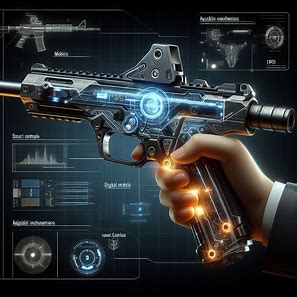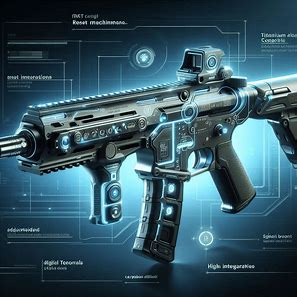Forced Reset Triggers (FRTs) are one of the most controversial and innovative firearm technologies in recent years. As demand grows and the legal landscape becomes increasingly complex, the future of FRT triggers hangs in the balance. This article explores how this niche product could evolve, what obstacles it faces, and what firearm owners should expect moving forward.
Understanding FRT Triggers
An FRT (Forced Reset Trigger) is a semi-automatic trigger system that forces the trigger to reset after every shot using the bolt carrier group’s recoil. This allows for extremely rapid firing, while technically firing only one round per trigger pull, keeping it within the legal definition of semi-auto.
Rise in Popularity
Gun enthusiasts, competitive shooters, and tactical trainers have shown significant interest in FRTs. Their ability to replicate near-automatic fire rates without breaking current laws made them a desirable tool for those looking to increase performance without needing NFA items.
Legal Landscape and Current Regulations
As of now, FRT triggers exist in a legal gray area. The Bureau of Alcohol, Tobacco, Firearms and Explosives (ATF) has taken a hard stance against certain models, claiming they violate the National Firearms Act by effectively turning semi-automatic rifles into machine guns.
ATF’s Involvement and Federal Scrutiny
In 2021 and 2022, the ATF launched several investigations into companies producing FRTs. Cease-and-desist letters were issued, products were seized, and lawsuits began. These actions suggest the federal government may classify these devices similarly to bump stocks or full-auto conversion kits.
State-Level Restrictions
Several states have already moved to restrict or outright ban FRT triggers. California, New York, New Jersey, and others classify them under laws targeting rapid-fire modifications. Other states remain silent or have ambiguous language, making it risky for owners.
Technological Evolution of Trigger Systems
As demand increases, so does innovation. Manufacturers are investing in research and development to design FRTs that meet legal standards while enhancing safety, durability, and ease of installation. Future trigger systems could incorporate compliance-ready design features that address federal concerns.
Innovations on the Horizon
Engineers are exploring mechanisms that limit rate of fire without compromising performance. Anti-jam designs, improved reset feedback, and adjustable pull weights may be standard in next-gen models. Some companies are also experimenting with pressure-sensitive sensors for more precise control.
Competitive Shooting and FRT Triggers
In the world of competitive shooting, milliseconds matter. FRT triggers provide a distinct edge for 3-Gun and action rifle competitions, where rapid follow-up shots improve scoring. If allowed to flourish, FRTs could become a mainstay in performance-driven arenas.
Tactical Training Applications
For law enforcement and security professionals, FRTs offer advanced training opportunities without fully automatic equipment. Simulated high-stress firing drills benefit from the increased firing pace, allowing for better preparation without NFA requirements.
Civilian Market Demand
Despite legal risks, civilian interest remains strong. Gun forums, YouTube reviews, and private sellers reflect high demand. As more owners seek to customize their rifles, FRT triggers are often on the wishlist, especially in states with fewer restrictions.
Role of Advocacy and Gun Rights Organizations
Organizations like the Firearms Policy Coalition (FPC), National Rifle Association (NRA), and Gun Owners of America (GOA) are actively defending FRT manufacturers and owners. Their lobbying efforts and court filings are shaping the broader legal battle over these triggers.

Legal Challenges and Court Cases
Several major lawsuits are in motion to contest the ATF’s classification of FRTs. These cases could set national precedent. A victory for gun rights groups might protect future innovation, while a loss could tighten restrictions across the board.
Future Design Trends for Compliance
To survive legal challenges, manufacturers are revising designs. Future FRTs may include built-in compliance features such as rate limiters, return springs with delayed resets, and electronic locks that deactivate the trigger under certain conditions.
Smart Triggers and Digital Integration
One possible evolution of FRTs is integration with smart firearm technology. This could include biometric sensors, app-based controls, and programmable trigger profiles. While still in early stages, digital control offers potential for both safety and performance enhancement.
Materials and Durability Enhancements
With high use comes wear and tear. Modern FRT triggers may incorporate aerospace-grade materials like titanium alloys, carbon composites, or high-durability polymers to withstand the high cycle rates without compromising performance.
Economic Impacts on the Firearms Industry
The FRT market has created new opportunities for parts manufacturers, gunsmiths, and online retailers. If regulatory crackdowns continue, many small businesses could suffer. Conversely, legalization could lead to mass production and lower prices, increasing accessibility.
Customization and Modularity
Consumers are increasingly looking for customizable solutions. Future FRTs could be modular, offering adjustable reset timing, interchangeable trigger shoes, and compatibility with different firearm platforms, such as AKs, PCCs, and bullpup rifles.
Online Communities and Influence
Firearm influencers and YouTube creators play a huge role in the adoption of new technologies. As long as platforms allow, reviews, demos, and comparison videos will continue to shape public perception and push innovation through user feedback.
Media Representation and Public Opinion
Mainstream media often paints FRTs in a negative light, associating them with mass shootings or criminal use. Positive media coverage—through responsible usage demonstrations and education—will be crucial to shifting public opinion and avoiding widespread bans.
Law Enforcement and Military Use Considerations
While not yet adopted widely, FRTs could see applications in training environments for law enforcement or military units. Their rapid-fire capability can simulate automatic fire for drills without violating equipment policies.
International Perspectives on Forced Reset Technology
Most other countries would classify FRT triggers as prohibited due to their restrictive gun laws. However, in some regions where semi-automatics are allowed, FRTs could be a new frontier—if they comply with those nations’ specific laws.
Balancing Freedom and Regulation
The future of FRT triggers hinges on finding a balance between preserving Second Amendment rights and addressing regulatory and public safety concerns. Achieving this equilibrium requires dialogue between manufacturers, lawmakers, and gun owners.
Risks and Misuse Concerns
One of the strongest arguments against FRTs is the potential for misuse. Without proper training, inexperienced users could lose control or create unsafe range conditions. Responsible ownership, training, and storage are key to mitigating these risks.
If you wanted to get more information, visit our website FRT Trigger.
Best Practices for Responsible Ownership
If you’re considering an FRT, be sure to:
- Understand your local and federal laws
- Purchase from reputable manufacturers
- Regularly inspect and maintain your firearm
- Use the trigger in controlled, safe environments
Long-Term Market Forecast
Assuming some form of legal protection or regulation is established, the market for FRTs could become as common as binary triggers or drop-in AR kits. Their future will depend largely on affordability, innovation, and regulatory outcomes.
Potential Bans and Their Implications
If FRTs are nationally banned, current owners could be forced to surrender or destroy them, similar to what happened with bump stocks. This could trigger further scrutiny on other aftermarket parts, chilling innovation within the firearms industry.
Future-Proofing Trigger Technology
To stay ahead of legislation, designers are working on modular and upgradeable systems. These could include plug-and-play components, legal lockouts, or firmware-based rate controls that adapt to changing regulations without replacing the entire system.

What Gun Owners Need to Watch For
Firearms enthusiasts should stay informed about:
- ATF updates and new classifications
- Ongoing lawsuits involving major manufacturers
- Legislative bills in their states
- Product recalls or safety bulletins
Conclusion
The future of FRT triggers is dynamic, evolving, and uncertain. Whether they’re embraced as the next step in firearm performance or banned as a public safety risk will depend on legal outcomes, public perception, and technological adaptation. For now, FRTs stand as a symbol of both freedom and controversy in the gun rights conversation.


